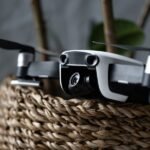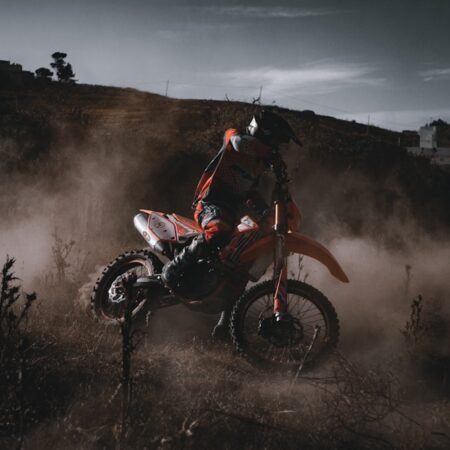Aerial photography is the art of capturing images from an elevated position, typically using drones, helicopters, or airplanes. This unique perspective allows photographers to capture stunning landscapes, cityscapes, and other subjects from a bird’s eye view. Aerial photography has become increasingly popular in recent years, thanks to advancements in drone technology and the accessibility of high-quality cameras.
When it comes to aerial photography, there are a few key factors to consider. First and foremost, understanding the principles of composition and framing is essential for creating visually appealing images. Additionally, having a good understanding of lighting and exposure is crucial for capturing high-quality aerial photographs. It’s also important to consider the weather conditions and time of day when planning an aerial photography shoot, as these factors can greatly impact the final result. Overall, aerial photography requires a unique set of skills and knowledge to master, but the results can be truly breathtaking.
Choosing the Right Equipment for Aerial Photography
Choosing the right equipment is crucial for successful aerial photography. The most common tool for aerial photography is a drone, which allows photographers to capture images from a variety of angles and heights. When selecting a drone for aerial photography, it’s important to consider factors such as camera quality, flight time, and stability. High-quality cameras with a wide range of settings and features are essential for capturing sharp and detailed images from the air. Additionally, longer flight times and stable flight capabilities are important for getting the perfect shot without any interruptions.
In addition to drones, other equipment such as gimbals, filters, and additional camera lenses can also enhance the quality of aerial photographs. Gimbals help stabilize the camera during flight, resulting in smoother and more professional-looking footage. Filters can be used to adjust the exposure and color balance of aerial photographs, while additional lenses can provide different perspectives and focal lengths. Ultimately, choosing the right equipment for aerial photography is essential for achieving stunning results.
Planning and Preparing for Aerial Photography
Planning and preparation are key components of successful aerial photography. Before heading out for a shoot, it’s important to research the location and consider factors such as weather conditions, airspace regulations, and potential obstacles. It’s also important to have a clear vision of the shots you want to capture and plan your flight path accordingly.
In addition to planning the logistics of the shoot, it’s also important to ensure that all equipment is in good working condition and fully charged. This includes checking the drone’s battery life, propellers, and remote control to avoid any technical issues during the shoot. It’s also important to have a backup plan in case of unexpected challenges or changes in weather conditions. Overall, thorough planning and preparation are essential for a successful aerial photography shoot.
Mastering the Techniques of Aerial Photography
Mastering the techniques of aerial photography requires practice, patience, and a good understanding of camera settings and composition. One of the most important techniques for aerial photography is understanding how to control the drone’s flight path and camera settings to capture the best possible images. This includes adjusting the camera’s exposure settings, focus, and white balance to achieve the desired look.
Another important technique for aerial photography is understanding how to compose visually appealing shots from an elevated perspective. This includes considering factors such as leading lines, symmetry, and framing to create dynamic and engaging images. Additionally, mastering the art of timing and capturing decisive moments is crucial for creating impactful aerial photographs.
Capturing Breathtaking Panoramas with Your Drone
Capturing breathtaking panoramas with a drone is one of the most rewarding aspects of aerial photography. Panoramic images allow photographers to capture wide-angle views of landscapes and cityscapes from a unique perspective. To capture stunning panoramas with a drone, it’s important to plan your flight path carefully and consider factors such as composition, lighting, and camera settings.
When capturing panoramic images with a drone, it’s important to use the panorama mode on your camera to ensure that each image seamlessly blends together. This mode typically allows you to capture multiple images in a sequence, which can then be stitched together in post-processing to create a single panoramic image. Additionally, using a wide-angle lens or adjusting the camera’s field of view can help capture more of the scene in each shot.
Post-Processing and Editing Aerial Photographs
Post-processing and editing are essential steps in creating stunning aerial photographs. After capturing images from a drone, it’s important to review and select the best shots before moving on to post-processing. This includes adjusting exposure, contrast, color balance, and other settings to enhance the overall quality of the images.
In addition to basic adjustments, post-processing also allows photographers to correct any distortions or imperfections in their aerial photographs. This can include straightening horizons, removing unwanted objects or distractions, and enhancing details to create a more polished final image. Additionally, adding creative effects or filters can help elevate the visual impact of aerial photographs.
Safety and Legal Considerations for Aerial Photography
Safety and legal considerations are important aspects of aerial photography that should not be overlooked. When operating a drone for aerial photography, it’s important to follow all local regulations and airspace restrictions to ensure safe and responsible flying. This includes obtaining any necessary permits or permissions for flying in certain areas or capturing images of private property.
In addition to legal considerations, safety should always be a top priority when flying a drone for aerial photography. This includes conducting pre-flight checks on all equipment, maintaining line of sight with the drone at all times, and avoiding flying in adverse weather conditions or crowded areas. It’s also important to be mindful of potential hazards such as power lines, trees, or other obstacles that could pose a risk to the drone or surrounding environment.
In conclusion, aerial photography offers a unique perspective that allows photographers to capture stunning images from above. By understanding the basics of aerial photography, choosing the right equipment, planning and preparing for shoots, mastering techniques, capturing breathtaking panoramas, post-processing and editing images, and considering safety and legal considerations, photographers can achieve outstanding results in this exciting field. With practice and dedication, aerial photography can be a rewarding and fulfilling pursuit for photographers of all levels.








